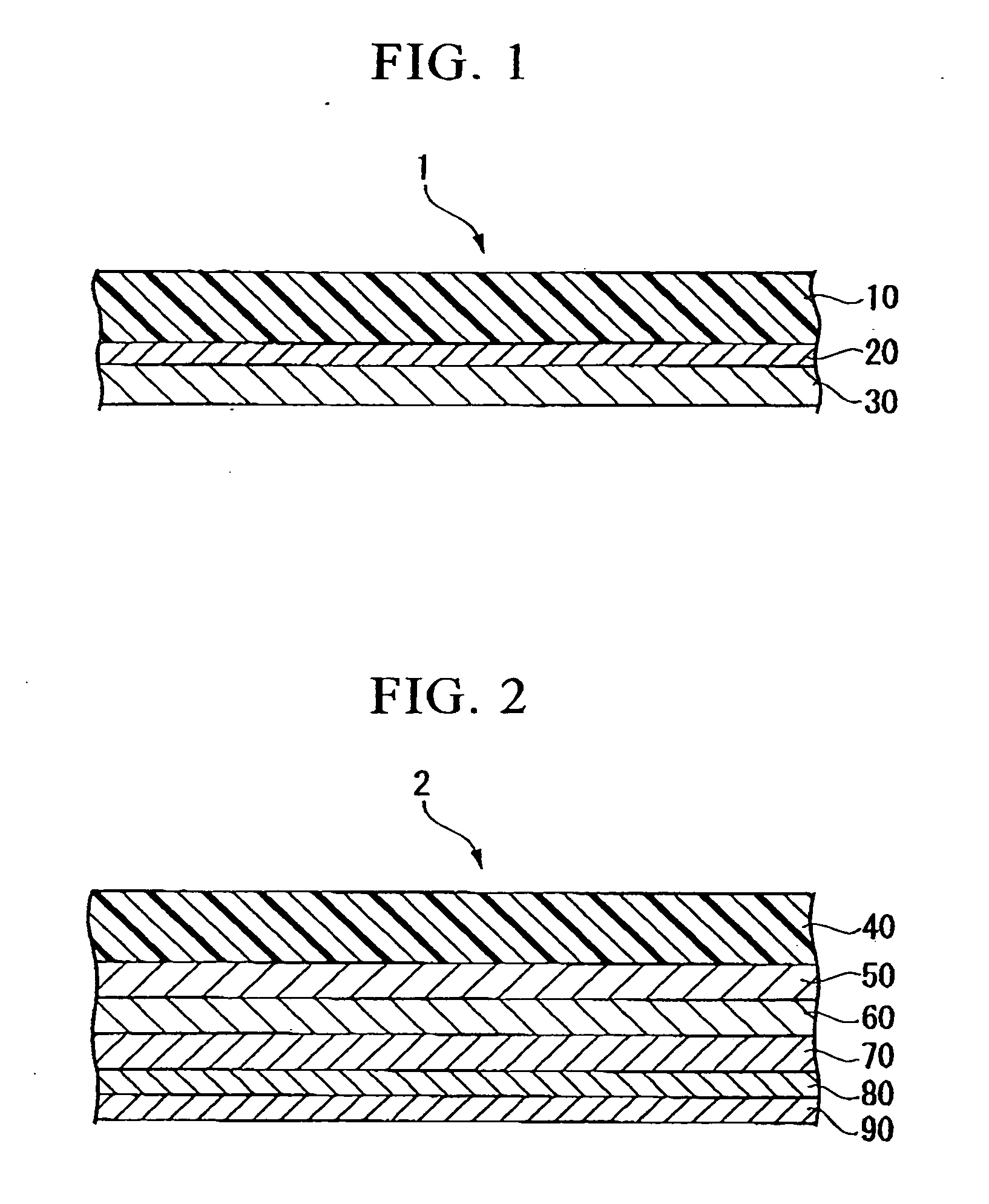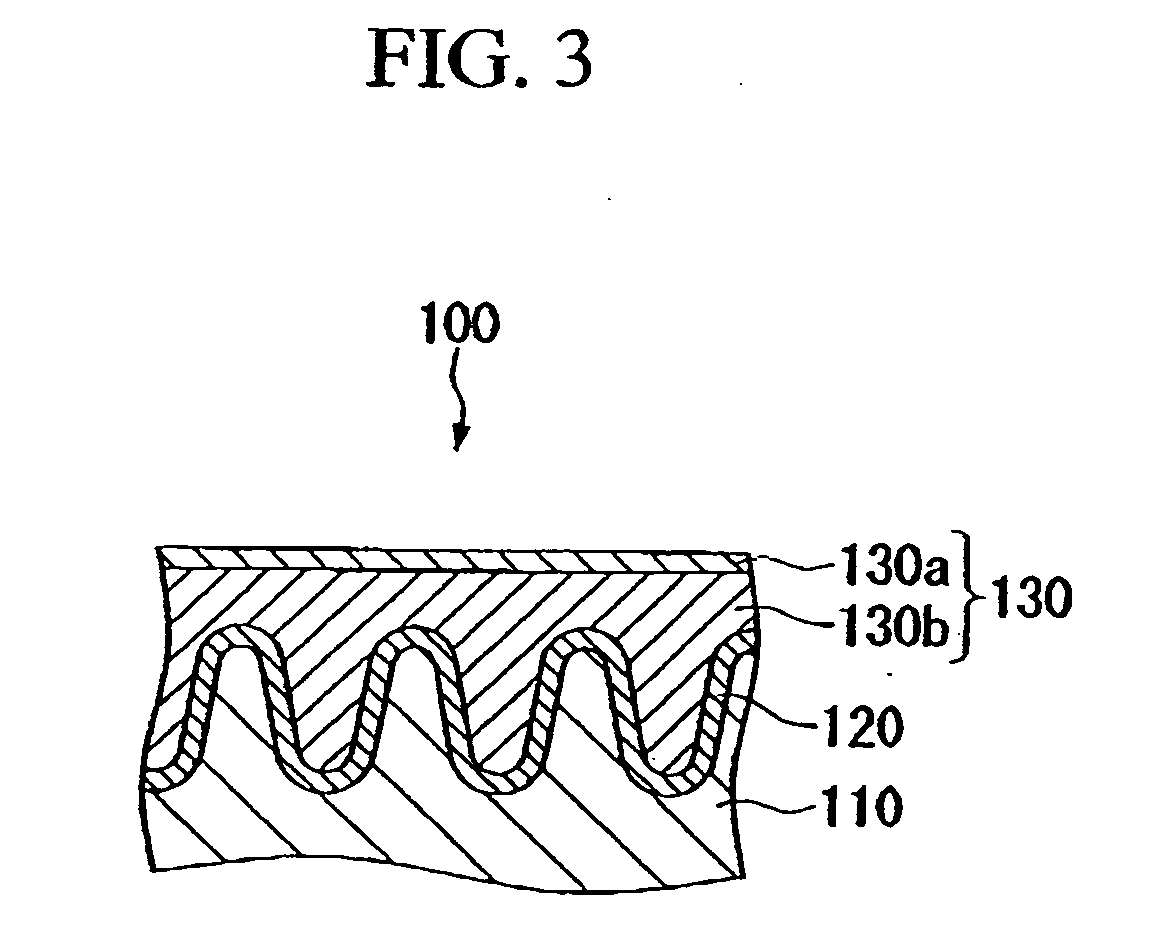Conductive composition and production method thereof, antistatic coating material, antistatic coating, antistatic film, optical filter, and optical information recording medium, and capacitors and production method thereof
- Summary
- Abstract
- Description
- Claims
- Application Information
AI Technical Summary
Benefits of technology
Problems solved by technology
Method used
Image
Examples
preparation example 1
Preparation of Conductive Polymer Solution 1
[0258] 145 g (1 mol) of sodium allyl sulfonate was dissolved in 1000 mL of ion exchange water, 1.14 g (0.005 mol) of an oxidant solution of ammonium persulfate dissolved in 10 mL of water beforehand was added dropwise for 20 min while stirring at 80° C., and the mixture was continuously stirred for additional 12 hours.
[0259] 1000 mL of sulfuric acid diluted to 10% by weight was added to the obtained solution containing polyallyl sulfonic acid, about 1000 mL of solution was removed by ultrafiltration method, 2000 mL of ion exchange water was added, and about 2000 mL of solution was removed by ultrafiltration method. The above ultrafiltration operation was repeated three times. Water in the obtained solution was removed under reduced pressure to give a colorless solid of polyallyl sulfonic ad
[0260] Subsequently, 14.2 g (0.1 mol) of 3,4-ethylenedioxythiophene and a solution obtained by dissolving 21.8 g (0.15 mot) of polyalkyl sulfonic acid...
preparation example 2
Preparation of Conductive Polymer Solution 2
[0264] 108 g (1 mol) of sodium allyl sulfonate was dissolved in 1000 mL of ion exchange water, 1.14 g (0.005 mol) of an oxidant solution of ammonium persulfate dissolved in 10 mL of water beforehand was added dropwise for 20 min while stirring at 80° C., and the mixture was continuously stirred for additional 12 hours.
[0265] 1000 mL of sulfuric acid diluted to 10% by weight was added to the obtained solution containing polyallyl sulfonic acid, about 1000 mL of solution was removed by ultrafiltration method, 2000 mL of ion exchange water was added, and about 2000 mL of solution was removed by ultrafiltration method. The above ultrafiltration operation was repeated three times. Water in the obtained solution was removed under reduced pressure to give a colorless solid of polyallyl sulfonic acid.
[0266] Subsequently, 11.4 g (0.1 mol) of 3-methoxythiophene and a solution obtained by dissolving 16.2 g (0.15 mol) of polyallyl carboxylate in 200...
preparation example 3
Preparation of Conductive Polymer Solution 3
[0269] 185 g (1 mol) of sodium styrene sulfonate was dissolved in 1000 mL of ion exchange water, 1.14 g (0.005 mol) of an oxidant solution of ammonium persulfate dissolved in 10 mL of water beforehand was added dropwise for 20 min while stirring at 80° C., and the mixture was continuously stirred for additional 12 hours.
[0270] 1000 mL of sulfuric acid diluted to 10% by weight was added to the obtained solution containing polystyrene sulfonic acid, about 1000 mL of solution was removed by ultrafiltration method, 2000 mL of ion exchange water was added, and about 2000 mL of solution was removed by ultrafiltration method. The above ultrafiltration operation was repeated three times. Water in the obtained solution was removed under reduced pressure to give a colorless solid of polystyrene sulfonic acid.
[0271] Subsequently, 6.6 g (0.1 mol) of pyrrole and a solution obtained by dissolving 18.5 g (0.15 mol) of polystyrene sulfonic acid in 2000 ...
PUM
| Property | Measurement | Unit |
|---|---|---|
| Fraction | aaaaa | aaaaa |
| Fraction | aaaaa | aaaaa |
| Fraction | aaaaa | aaaaa |
Abstract
Description
Claims
Application Information
 Login to View More
Login to View More - R&D
- Intellectual Property
- Life Sciences
- Materials
- Tech Scout
- Unparalleled Data Quality
- Higher Quality Content
- 60% Fewer Hallucinations
Browse by: Latest US Patents, China's latest patents, Technical Efficacy Thesaurus, Application Domain, Technology Topic, Popular Technical Reports.
© 2025 PatSnap. All rights reserved.Legal|Privacy policy|Modern Slavery Act Transparency Statement|Sitemap|About US| Contact US: help@patsnap.com


